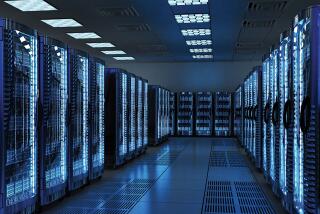U.S. wins: Fastest supercomputer in world is right here
In the race to build the fastest computer in the world, America is back on top.
On Monday, a super-computer designed by IBM for the National Nuclear Security Administration (NNSA), took the first spot on the Top 500 list, a list that comes out twice a year ranking the 500 fastest computers on the planet.
It is the first time the U.S. has topped the list since November 2009.
The winning super-computer is called Sequoia, and it is housed at the Lawrence Livermore National Laboratory in Livermore, Calif.
Sequoia will be used to build complex models that let scientists test the nation’s stockpile of nuclear weapons without having to do nuclear testing in the real world.
So how fast is the fastest computer in the world? Well, according to the Lawrence Livermore National Laboratory, it would take 6.7 billion people working with hand-held calculators 320 years to do the same calculation that Sequoia could power through in just one hour.
And the BBC reports that today’s fastest computer is 273,930 times faster than the fastest computer of 1993.
“A calculation that took three full days to compute on the Thinking Machines in 1993 today can be done in less than one second on the Sequoia,” Jack Dongarra, a computer scientist who helps oversee the Top 500 list, told the publication.
Sequoia takes up about one-tenth of an acre, a standard size for these computers, Dongarra said.
“They are enormous machines,” he said in an interview with the Los Angeles Times.
They also cost a lot of money to operate. Dongarra estimates that Sequoia’s electric bill will be close to $8 million this year.
The Sequoia is about 1.5 times as fast as the next-fastest computer on the list, Fujitsu’s “K Computer” installed at the RIKEN Advanced Institute for Computational Science (AICS) in Kobe, Japan.
It is also 2.49 times more energy efficient than the Japanese computer.
As for how long it will last on the top of the list, it’s hard to say. Dongarra said the Japanese spent a year at the top of the list. Before that, the top super-computer topped the list for just six months.
“These things do have a life span,” he said. “I would expect that maybe in a year we would see a faster super-computer.”
ALSO:
1976 Apple computer sells for $374,500
Online store implements world’s first Internet Explorer 7 tax
Going to Ethiopia? If you use Skype you could be there 15 years
Follow Deborah Netburn on Twitter or Google+
More to Read
Inside the business of entertainment
The Wide Shot brings you news, analysis and insights on everything from streaming wars to production — and what it all means for the future.
You may occasionally receive promotional content from the Los Angeles Times.










